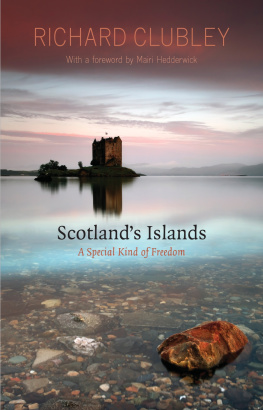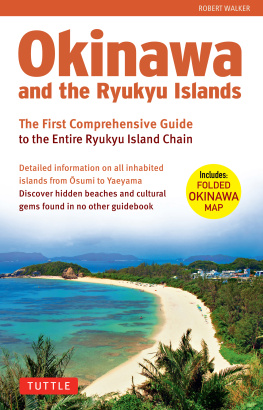INSPIRED TRAVELLERS GUIDE
HIDDEN PLACES
SARAH BAXTER
ILLUSTRATIONS BY AMY GRIMES

INTRODUCTION
WHAT DOES hidden actually mean? Secret, out of sight, undercover? Secluded and tucked away? Camouflaged, cryptic, mysterious, arcane? Hidden is all these things and more a hidden place is one that confers a feeling that youre somehow peeling back a layer, going somewhere few have been, gaining an insight into something once or still concealed.
Thats the premise behind this uncloaking compendium. Its not a comprehensive guide, but a glimpse beneath the covers of a few of the planets part-obscured places. Sites with stories to disclose; sites of majesty and mystery that have provided shelter, inspiration, strategic advantage and spiritual succour to our ancestors across the ages.
This book uncovers a selection of hidden spots. Maybe some youve never heard of; some you have; some that are on your radar but perhaps whose story you dont quite know. The aim is to lift the lid a little to bring their stories to the fore; to encourage exploration beyond the more obvious places to these secret repositories of wonder and intrigue instead. In this, your armchair travel is aided by beautiful illustrations, which help evoke the aura of each locale, helping every entry to live on the page.
So yes, there are many types of hidden. For starters, some spots are concealed by virtue of their location theyre unreachable by road, adrift in hostile deserts, teetering on mountaintops or sunk at the bottom of the sea. And the effort to get to them only enhances the joy of discovery. For instance, there are a thousand tens of thousands of valleys in the Alps, where geranium-bright chalets nestle prettily between the mountains. So what makes the any better? Its the heightened spirit of adventure required to reach it, and the knowledge that the people who still live here whose ancestors have done so for centuries have different tales to tell.
Then there are places that are physically concealed, maybe shrouded in a pelage of greenery, an insinuation of tree roots, a dusting of dirt and sand, an almost all-consuming jungle. Human history being steadily or rampantly reclaimed by nature so that its original meaning has become obscured. Places once grand and powerful now poking timidly from behind shrubbery and scrubbery, moss and weeds. Such places include Cambodias ruinous , the first capital of the Khmer Empire, which once ruled swathes of Southeast Asia. Now it sits almost forgotten atop its overgrown plateau, its true identity only confirmed to the world in the past decade. This fallen great is almost within touching distance of the magnificent temple complex of Angkor the site that usurped Phnom Kulen, and that sees over 2.5 million visitors a year. But no more than a trickle of those hordes make the detour to uncover the buried treasure nearby.
And thats key. So many hidden sites offer a more intimate travel experience. Because they might be harder to reach, lesser known or off-grid, they offer something special to those who make the effort to seek them. The chance to walk amid past stories without the whirr of the present; to uncover their secrets without having to push through the crowds; the chance to view, to touch, to understand something that maybe few others have ever seen. To seek out a hidden place is to opt for the path less taken, to expand your mind. Which seems the true spirit of travel. As once said by unconventional adventuress Mary Schffer Warren whom youll meet by I hate doing the ordinary thing.
Sometimes its less the site that is hidden than its meaning. The bricks and mortar, the architecture and artistry, are in plain view, but the story has been skewed, by memory or even malice. Take , a ruined city that is the finest ancient construction in Africa south of the Sahara Desert. Its quite remote, a good half-days drive from Harare. And weeds frill the cracks in its venerable walls. But the hidden theme here concerns the truth. For years Zimbabwes colonial masters muddied the origins of this significant site, spinning a fiction that suited their prejudice and agenda, keeping Great Zimbabwes actual origins veiled from the people whose ancestors were behind its creation. To know this as you wander around its expert-made ramparts is to see it with completely different eyes.
There are many more places that could have been revealed on these pages. Perhaps we could have taken a hot hike through the tropics to reach Ciudad Perdida, Colombias lost city, built by the Tairona people around 1,200 years ago and now sunken back into the jungle. Or we could have delved into Derinkuyu, the labyrinthine underground city carved into the soft tuff of Cappadocia in Turkey, where early Christians hid out to avoid religious persecution. Or perhaps we could have sailed to the Forbidden Island of Niihau, a tiny, long-off-limits isle that is one of the last bastions of traditional Hawaiian culture; now, small numbers of visitors are permitted on guided tours.
Or maybe the next best place that could have been included in these pages hasnt even been rediscovered. With the tendency of both human brains and Mother Nature to erode, cover over, misremember and forget, who knows what sites and stories were yet to find?
TYNEHAM
Where? Dorset, England
What? The tiny village that died for D-Day
THERE ARE no parcels piled up in the post office these days; no jars of liquorice on the counter nor sounds of telegrams being relayed from the back room. No coats hang off the hooks in the school hall. The terraced cottages, once quaintly thatched, lie ruined and roofless; their walls bare, their fireplaces cold and empty. Tucked into the folds of the Purbeck Hills, in earshot of the English Channel, this solemn little village has lost its villagers. Or rather, theyve lost it. The Taylors and the Tizzards, the Wares and the Wheelers, the Balsons, Brachis and Bonds families of another time and, now, another place. Evicted temporarily for the sake of the greater good, never to return ...
On 17 November 1943, deep into World War II, Major-General Miller at the British War Department sent each resident of Tyneham a letter. It told of the urgent need for civilian-free land on which troops could train. Unfortunately Tyneham was just the ticket. It is regretted, the Major-General wrote, that, in the National Interest, it is necessary to move you from your homes. The letter concludes: The Government appreciate that this is no small sacrifice ... but they are sure that you will give this further help towards winning the war with a good heart.
The village of Tyneham is said to date back to the Iron Age; it was mentioned in the 1086 Domesday Book (known then as Tigeham, or goat enclosure) and later had a fine three-storey Elizabethan manor, considered one of the finest houses in Dorset. But all that counted for nought in 1943, when the 250 or so inhabitants were given just 30 days to pack up and leave. With preparations for the Allied invasion of Normandy (D-Day) progressing apace, the military requisitioned the village and 3,035 hectares (7,500 acres) of surrounding chalk down and heathland for their secret training operations. Tyneham was, unluckily, close to Lulworth Camp, which had long been used as a tank firing range. As World War II dragged on, and more powerful weapons began to be developed, the Lulworth range was deemed insufficient. So the adjacent areas including tiny Tyneham were commandeered.











